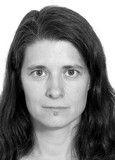Informativeness of biomechanical criteria in assessing the competitive efficiency of highly qualified cross-country skiers
Ключевые слова:
cross-country skiing, biomechanical characteristics, simultaneous one-step skating, highly qualified ski racers, assessment of competitive activity.Аннотация
Objective of the study was to assessment of the influence of competitive conditions on the biomechanical characteristics of the technique of simultaneous single-step skating skiing (SSS).
Methods and structure of the study. The biomechanical indicators of the OSH technique of highly qualified cross-country skiers were determined using Dartfish Pro 10 software based on video footage of the athletes’ movements on the flat sections of the sprint, 10 km race and in the roller ski test. The free development environment «RStudio» was used for data analysis and visualization.
Results and conclusions. A statistically significant negative correlation was found between the speed on the first lap and the angles in the knee and hip joints at the time of placing the poles (-0.552 (<0.05) and -0.573 (<0.05)) in men. In sprinting, skiers' speed was associated with the magnitude of the hip angle (-0.558 (<0.05)). In all other cases, there was no relationship between the values of joint angles and the speed of movement in competitions. The absolute values of the joint angles in the key phases of GSHP depend on the exerted effort and change as a result of a controlled change in the intensity of movement or an unintentional decrease in speed as a result of fatigue, which makes it possible to use these indicators to assess the level of preparedness in races and intensive training. The amplitude of movements in the ankle, knee and hip joints during the push-off in the GSHS is not related to the speed of movement under competition conditions.
Библиографические ссылки
Kryuchkov A.S., Volkov M.V., Rostovtsev V.L., Myakinchenko E.B. Pokazateli kinematiki konkovogo khoda vysokokvalifitsirovannykh biatlonistov, otlichayushchikhsya po reytingu IBU. Nauka i sport: sovremennyye tendentsii, publ. 2023. Vol. 11. No. 4 pp. 6-12.
Svidetelstvo o gosudarstvennoy registratsii programmy dlya EVM «Avtomatizirovannoye postroyeniye kinematicheskikh skhem po uglovym kharakteristikam sportsmenov v klyuchevykh momentakh lyzhnykh khodov». (SPbNIIFK.BIOMEKH-VIZUAL), publ. No. 2023684429 dated 15.11.2023.
Jones T., Lindblom H., Karlsson O. Anthropometric, Physiological, and Performance Developments in Cross-country Skiers. Medicine and Science in Sports end Exercise. 2021. No. 53 (12). pp. 2553-2564.
Lindinger S. J., Holmberg H.C. How do elite cross-country skiers adapt to different double poling frequencies at low to high speeds? European Journal of Applied Physiology. 2010. No. 111 (6). pp. 1103-1119.
R Core Team. R: A Language and Environment for Statistical Computing. Vienna, Austria: R Foundation for Statistical Computing publ., 2021.

Дополнительные файлы
Опубликован
Как цитировать
Выпуск
Раздел
Лицензия

Это произведение доступно по лицензии Creative Commons «Attribution» («Атрибуция») 4.0 Всемирная.
